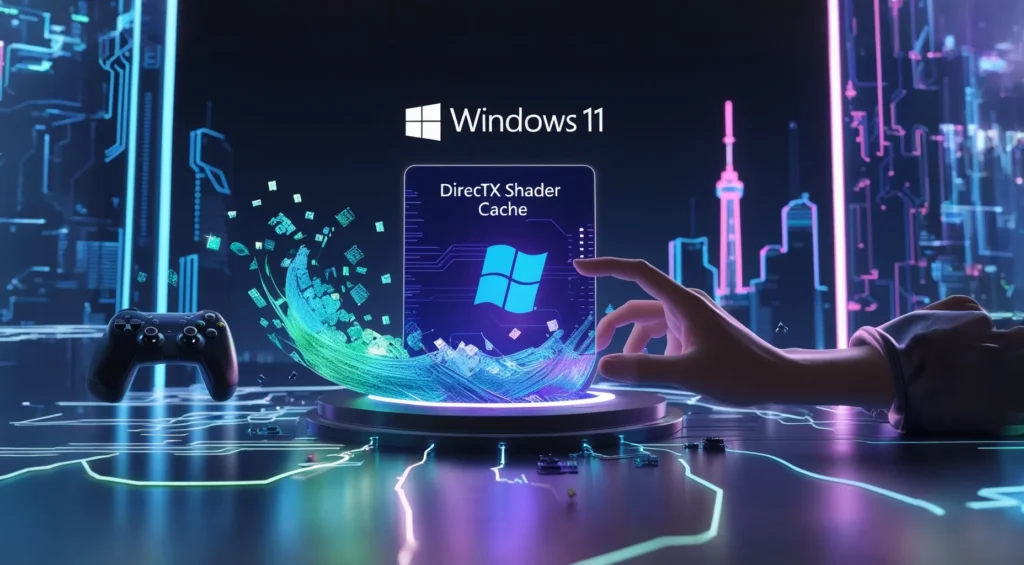If you’re a Windows 11 user, you’ve probably noticed how apps and games sometimes lag or act up. One simple fix could be to delete DirectX Shader Cache—a collection of files your graphics system creates to speed things up. Over time, though, this cache can grow too big or get corrupted, slowing down your system instead of helping it. In this guide, I’ll show you three proven, easy methods to delete DirectX Shader Cache and keep your PC running smoothly. Plus, I’ll throw in some extra tips to make sure you’re getting the most out of your setup. Let’s jump right in!
What Exactly Is DirectX Shader Cache?
Before we dive into the how-to, let’s break it down. DirectX Shader Cache is a set of files your graphics card generates to cut down app and game loading times. Think of it as a shortcut your system uses to boost performance and responsiveness. While it’s a handy feature, it’s not critical—meaning you can safely delete DirectX Shader Cache without messing up your PC. The best part? It rebuilds itself automatically when you launch graphics-heavy programs next time.
4 Ways to Effortlessly Clear Microsoft Store Cache in Windows 11
1. Delete DirectX Shader Cache Through Settings
The simplest way to delete DirectX Shader Cache is by using the Windows 11 Settings app. It’s perfect for anyone who wants a no-fuss solution. Here’s how:
- Click the Start button and choose Settings.
- Click to the System tab on the left.
- On the right, scroll down and click Storage.
- Under Storage Management, select Cleanup recommendations.
- Click See Advanced Options, uncheck everything except DirectX Shader Cache, and hit Remove Files at the top.
Boom! The cache is gone, and your system gets a fresh start.
2. Delete DirectX Shader Cache with Disk Cleanup
If you’re a fan of classic Windows tools, the Disk Cleanup utility is a solid option to delete DirectX Shader Cache. Follow these steps:
- Open the Windows 11 Search bar, type Disk Cleanup, and launch it.
- Pick your system drive (usually C:) and click OK.
- In the Files to Delete section, check DirectX Shader Cache, then hit OK again.
This method is quick and reliable, especially if you’re already cleaning up other junk files on your drive.
3. Delete DirectX Shader Cache Using Storage Sense
Windows 11’s built-in Storage Sense feature is a lifesaver for managing space—and yes, it can delete DirectX Shader Cache, too. Here’s how to set it up:
- Go to Settings via the Start menu.
- Click System, then scroll to Storage on the right.
- Toggle Storage Sense on to let it automatically clear the cache over time.
- Want it done now? Click Storage Sense and hit Run Storage Sense now.
This hands-off approach is great if you prefer your PC to handle maintenance on its own.
Does Deleting DirectX Shader Cache Cause Problems?
Nope! Deleting DirectX Shader Cache is totally safe. In fact, it can even perk up your gaming or app performance if the cache is bogging things down. That said, don’t expect miracles every time—your hardware, game compatibility, and other factors play a role too. The cache will regenerate as needed, so you’re never left without it for long.
Extra Tips for a Smoother Experience
To keep your system in top shape, try deleting DirectX Shader Cache every few months—or sooner if you notice stutters in games or apps. Pair this with a quick driver update for your graphics card (via Device Manager or the manufacturer’s site) to maximize performance. If you’re a heavy gamer, consider tweaking in-game graphics settings too—sometimes a lower shader load can reduce cache buildup in the first place. Oh, and don’t forget to restart your PC after clearing the cache; it helps everything settle in nicely.
These three methods to delete DirectX Shader Cache in Windows 11 are all you need to tackle slowdowns or glitches. Whether you’re a casual user or a gaming enthusiast, keeping this cache in check can make a difference. Is this helpful? Please share it with your friends who might be struggling with their Windows 11 setup. Got questions? Drop them below—I’m here to help!
FAQs About Deleting DirectX Shader Cache in Windows 11
Que: Why should I delete DirectX Shader Cache?
Ans: You’d want to delete DirectX Shader Cache if it’s corrupted or bloated, as it can slow down apps and games instead of speeding them up.
Que: Will deleting DirectX Shader Cache affect my games?
Ans: Not negatively! It might even improve performance, though you could see slightly longer load times the first time a game rebuilds the cache.
Que: How often should I delete DirectX Shader Cache?
Ans: Every few months is a good rule of thumb, or whenever you notice graphics issues—like lag or crashes—in your apps or games.
Que: Can I recover the DirectX Shader Cache after deleting it?
Ans: You don’t need to—it regenerates automatically the next time you run a graphics-intensive program. No manual recovery is required!
Que: Does Storage Sense delete DirectX Shader Cache automatically?
Ans: Yes, if you enable it! Storage Sense can clear this cache (and other junk) on a schedule or when your drive’s low on space.
Que: What if deleting the cache doesn’t fix my issue?
Ans: Try updating your GPU drivers, checking for Windows updates, or tweaking app settings. If that fails, the problem might be deeper than the cache.
